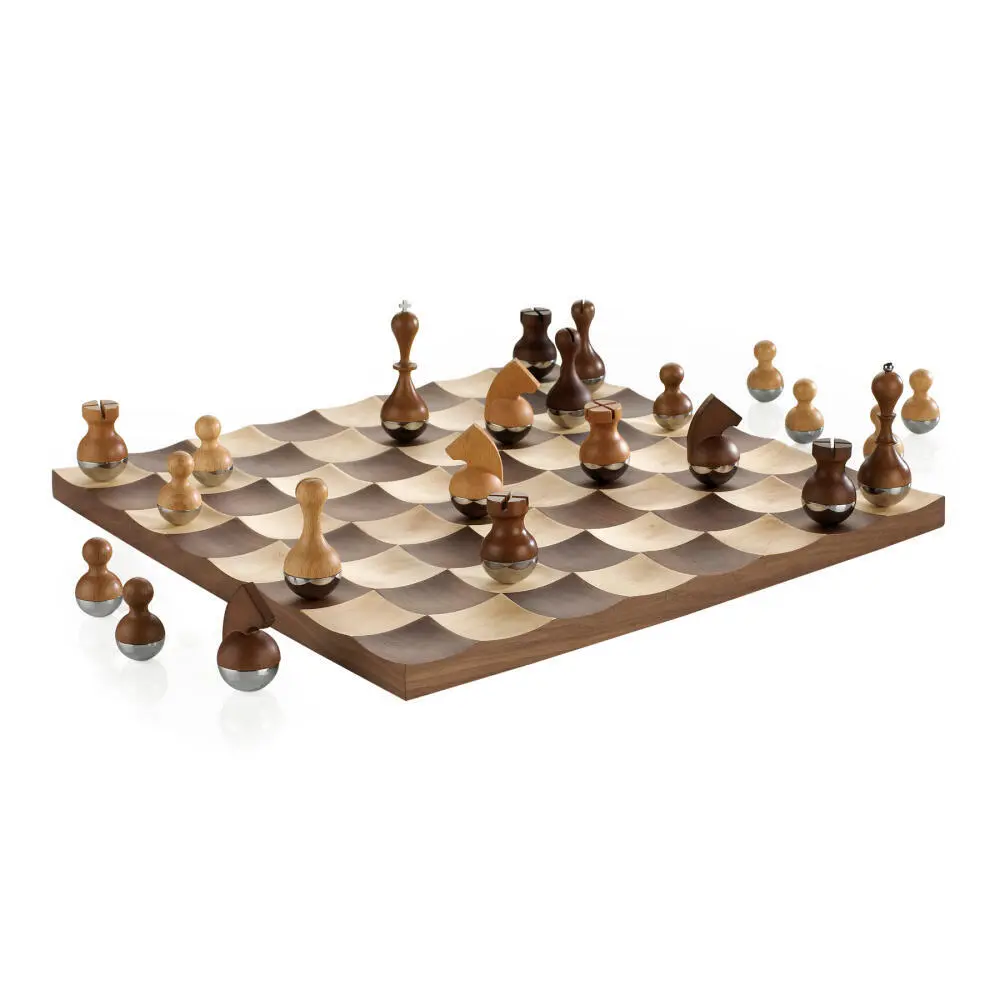Cubic chess
Cubic Chess
Cubic Chess is a chess variant invented by Vladimír Pribylinec in 1977. The game substitutes cubes for chess pieces, with four faces of each cube displaying a different chess piece (pawn, knight, bishop, and rook), and the two other faces being blank and oriented to the players. The game follows the normal rules of chess, with some special differences, such as non-pawn pieces becoming captured and retained by the capturer, unrotated, into off-board “stock”.
Game Components of Cubic chess:
Cubes: Each cube has four faces with different chess pieces and two blank faces.Chessboard: The game is played on a standard 8×8 chessboard.Setup time: The game requires less than 1 minute to set up.Playing time: Casual games usually last between 10 and 60 minutes.
Gameplay Mechanics of Cubic chess:
The game follows the normal rules of chess, with some special differences related to capturing non-pawn pieces.Players take turns moving cubes on the board, with the goal of capturing the opponent’s king.
Game Objective of Cubic chess:
The objective of Cubic Chess is to capture the opponent’s king, just like in traditional chess.
Player Experience:
Cubic Chess offers a unique and engaging way to play chess, combining physical manipulation of cubes with strategic and tactical thinking.The game is suitable for players of all skill levels, from beginners to experienced chess players.You can buy Cubic Chess online from various sources, including specialty chess shops and online retailers.
What are the differences between Cubic Chess and Courier Chess?
Cubic Chess and Courier Chess are both unique chess variants. However, the main difference is that Cubic Chess is played on a 5x5x5 board with additional pieces and rules, while Courier Chess is a german courier chess variant with a larger 12×8 board and extra pieces like the courier and the jester.
Related Games:
Three-dimensional chess: Developed by Lionel Kieseritzky in 1851, this game uses an 8x8x8 board and follows the standard rules of chess.Chess history: The origin of chess can be traced back to the 7th century, with various precursors and related games found in different cultures.
Game Components of Cubic Chess
How To Setup Cubic Chess
The setup involves placing the pieces on specific levels of the 3D board. For Raumschach, White starts on levels A and B, while Black starts on levels D and E. Each level is denoted by capital letters, and the pieces are arranged similarly to traditional chess but distributed across the 3D space.
Gameplay Mechanics and Game Objective
Player Experience
Playing cubic chess requires a significant amount of spatial awareness and visualization skills. The 3D environment adds complexity to piece movements and strategy, making it an engaging and challenging experience. Players must think in all three dimensions, planning moves that consider vertical, horizontal, and diagonal paths. This game is particularly appealing to those who enjoy puzzles and strategic thinking.
Pros
Cons
Personal Thoughts on Cubic Chess
Cubic chess is ideal for experienced chess players looking to challenge themselves and expand their strategic thinking. It is not a replacement for traditional chess but rather an intriguing variant that appeals to those with a penchant for complex puzzles and 3D spatial reasoning. While it may not be for casual players due to its complexity, it offers a fascinating experience for those willing to invest the time to understand and master its unique mechanics.
We are supported by our audience. When you purchase through links on our site, we may earn an affiliate commission, at no extra cost for you. Learn more.

